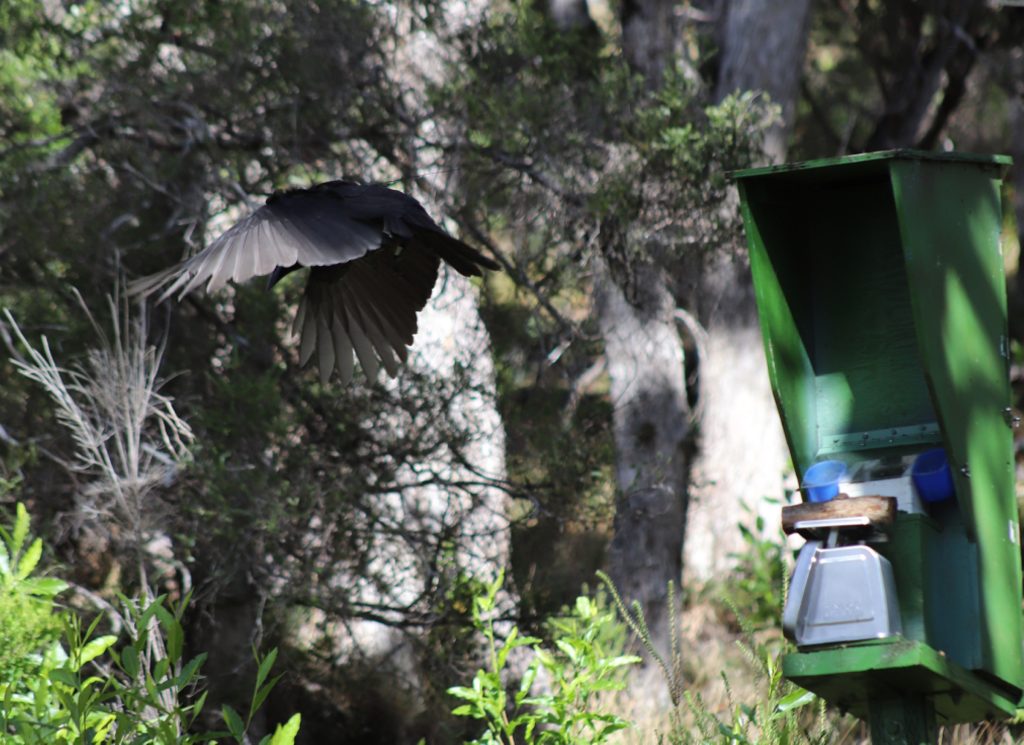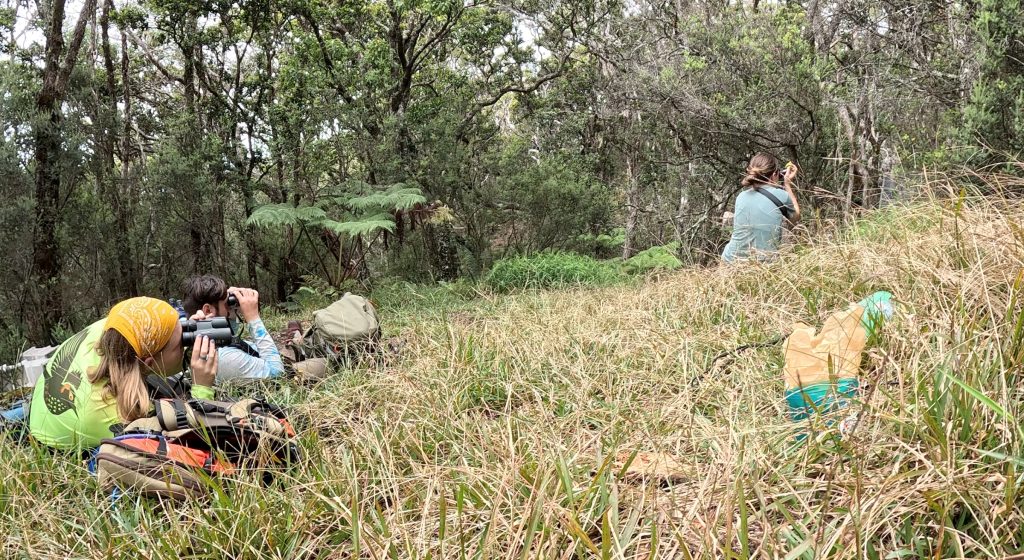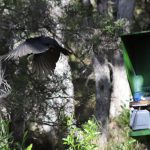2 more ʻalalā adapting in field aviary on Maui, will soon join members of wild cohort
A pilot project that in November 2024 released five ʻalalā, or Hawaiian crows, into the forests of Maui is expanding its flock.
Two more ʻalalā — a male and female — were recently translocated to the field aviary where the first five birds got their start more than a year ago.
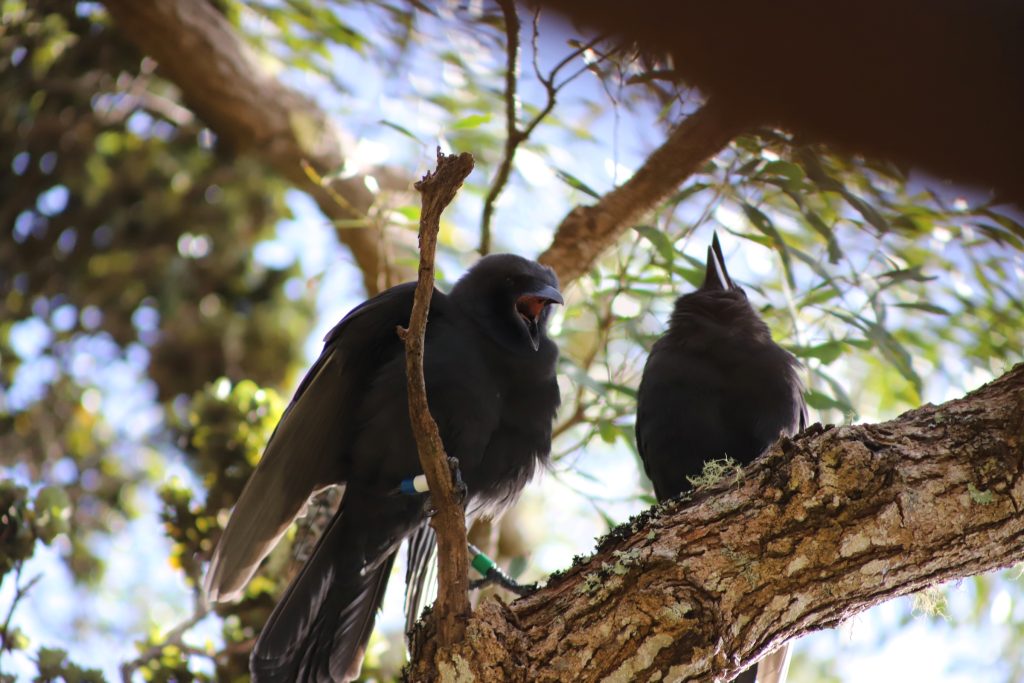
The two new birds, both a year younger than their more established counterparts, are now taking their turn at calling the release aviary home. Within its safe confines, they are acclimating to the sights and sounds of the forest and using the secure space to strengthen their flight and landing muscles.
They are also becoming more familiar with the supplemental feeder stations — wooden boxes with a perch, suspended off the ground — that they were introduced to in captivity.
Two feeder stations located within the aviary are manually replenished daily by field staff with protein, fruits and veggies. They are also automated to dispense food pellets at given times of the day.
Two other feeders, strategically positioned in the forest, are used by the first five.
Until the ʻalalā become fully self-sufficient foragers, the feeder stations serve as essential nutritional support, supplementing a natural diet that includes maile, ʻōlapa and pūkiawe.
The system does more than keep the birds healthy, however. It also helps keep the flock anchored to an area where staff can safely and efficiently respond if a bird becomes sick or injured.
The timing of this latest release was intentional — a last chance to grow the group as the initial cohort approaches sexual maturity.
Juvenile ʻalalā are more socially cohesive, spending time among the group foraging, exploring and learning from one another. They acquire skills together that will translate to success and sustainability later.
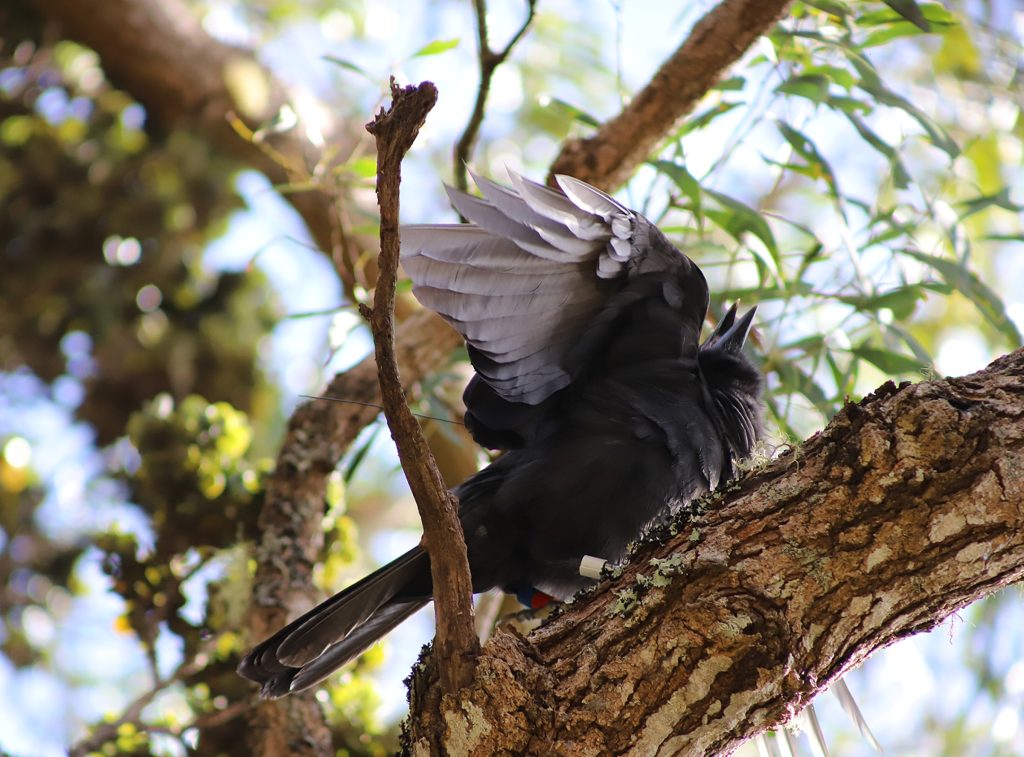
At maturity ʻalalā begin to pair off, abandoning the company of the larger group and becoming more territorial. The field team anticipates this occurring anywhere between now and springtime.
The fortitude the first five ʻalalā have shown thus far — having expanded their flight range and honed their skill sets since captivity — gives momentum and optimism for future progress.
“The cohort that was released last year is thriving and exhibiting a lot of natural behaviors,” said Maui Forest Bird Recovery Project Aviculture Specialist Tess Hebebrand in the announcement of the flock expansion. “Adding two new birds to the group gives us the opportunity to learn more about how the species adapts to life in the wild and can inform, when the time comes, future reintroductions on Hawai‘i Island.”
Members of Maui’s manu ʻohana and project partners including San Diego Zoo Wildlife Alliance, University of Hawai‘i and Hawai‘i Department of Land and Natural Resources Division of Forestry and Wildlife gathered at the Maui Forest Bird Recovery Project campus in Olinda for a special send-off ceremony prior to the translocation of the two new birds.
Kekai Robinson with Maui County Department of ʻŌiwi Resources led a pule, or blessing, that emphasized how the effort to reintegrate this species into the community brings together culture and ʻāina.
The emotional event was filled with aloha, gratitude and well wishes. It touched on the project’s progress to date and honored the time, dedication and support from partners and the community.

While the Maui Forest Bird Recovery Project team handles the day-to-day care and monitoring activities at the field site, the work has been the collective effort of many hands and voices.
“Sustaining these ʻalalā in the wild for more than a year is an important accomplishment and a meaningful milestone for conservation in Hawaiʻi,” said Maui Forest Bird Recovery Project Program Director Dr. Hanna Mounce in the announcement. “I hope it gives our community confidence that, with care and collaboration, we can return native species to their rightful place on the landscape and that is the kind of progress we should continue to pursue.”
The two new birds will get their chance to further spread their wings and experience the unfettered freedom the first cohort enjoys within a matter of weeks upon their release.
“Seeing the first five birds thriving after a full year in the forest and being there with them every day of that journey, has been not only extraordinary, but also gives us hope,” Mounce added. “We’re optimistic that these two new birds will be welcomed into the group as they begin their own path.”



